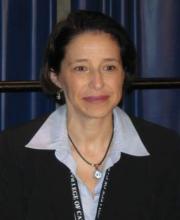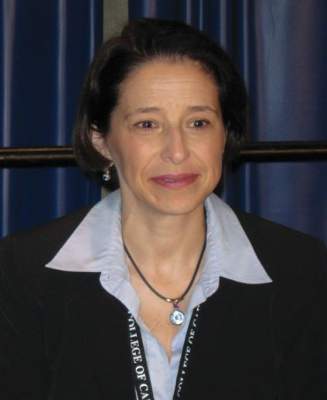User login
Women in cardiology make considerably less than men do, according to research presented Nov. 8 at the American Heart Association scientific sessions.
“There was a $31,749 gender difference in salary that was not explained by the detailed measures of personal, job, and practice characteristics,” according to study coauthor Dr. Pamela S. Douglas, who presented the findings.
“The lack of gender diversity in the cardiology workforce is striking, with recent workforce estimates suggesting that women constitute only about 12% of general cardiologists and even smaller proportions of specialties like interventional cardiology and clinical cardiac electrophysiology,” according to Dr. Douglas, professor of medicine at Duke University and a member in the Duke Clinical Research Institute, both in Durham, N.C.
Using data from MedAxiom, a membership network and service provider for cardiology practices, hospitals, and academic centers, Dr. Douglas and her colleagues analyzed data on 229 women and 2,450 men from 161 practices.
They found women were less likely to have an interventional subspecialty (11% vs 39%) and were nearly twice as likely to be noninvasive cardiologists (53% vs 28%).
Women worked full time 80% of the time, compared with 91% of men (P less than .001), but worked fewer half-days (387 for women vs. 406 for men; P = .001). The number of mean number of work relative value units generated by women was 7,404, compared with 9,497 for men, (P less than . 001), according to the study, which was published simultaneously in the Journal of the American College of Cardiology.
After researchers adjusted for geographical region; practice size and makeup; measured job and productivity characteristics, such as type of subspecialty, compensation models, and the whether there was a female administrative director, Dr. Douglas said women in the analysis should have earned an average of $31,749 more than they actually did, as confirmed by a further multivariate analysis of the direction and magnitude of the independent association between gender and salary.
Women have made up about half of the enrollment at U.S. medical schools for more than a decade, but only 21% of all first-year cardiology fellows in 2012-2013 were women, according to the American Board of Internal Medicine.
“The findings should also motivate efforts to ensure equity in pay, including the promotion of greater transparency and consistency in salary and reward observed,” according to Dr. Douglas.
On Twitter @whitneymcknight
Women in cardiology make considerably less than men do, according to research presented Nov. 8 at the American Heart Association scientific sessions.
“There was a $31,749 gender difference in salary that was not explained by the detailed measures of personal, job, and practice characteristics,” according to study coauthor Dr. Pamela S. Douglas, who presented the findings.
“The lack of gender diversity in the cardiology workforce is striking, with recent workforce estimates suggesting that women constitute only about 12% of general cardiologists and even smaller proportions of specialties like interventional cardiology and clinical cardiac electrophysiology,” according to Dr. Douglas, professor of medicine at Duke University and a member in the Duke Clinical Research Institute, both in Durham, N.C.
Using data from MedAxiom, a membership network and service provider for cardiology practices, hospitals, and academic centers, Dr. Douglas and her colleagues analyzed data on 229 women and 2,450 men from 161 practices.
They found women were less likely to have an interventional subspecialty (11% vs 39%) and were nearly twice as likely to be noninvasive cardiologists (53% vs 28%).
Women worked full time 80% of the time, compared with 91% of men (P less than .001), but worked fewer half-days (387 for women vs. 406 for men; P = .001). The number of mean number of work relative value units generated by women was 7,404, compared with 9,497 for men, (P less than . 001), according to the study, which was published simultaneously in the Journal of the American College of Cardiology.
After researchers adjusted for geographical region; practice size and makeup; measured job and productivity characteristics, such as type of subspecialty, compensation models, and the whether there was a female administrative director, Dr. Douglas said women in the analysis should have earned an average of $31,749 more than they actually did, as confirmed by a further multivariate analysis of the direction and magnitude of the independent association between gender and salary.
Women have made up about half of the enrollment at U.S. medical schools for more than a decade, but only 21% of all first-year cardiology fellows in 2012-2013 were women, according to the American Board of Internal Medicine.
“The findings should also motivate efforts to ensure equity in pay, including the promotion of greater transparency and consistency in salary and reward observed,” according to Dr. Douglas.
On Twitter @whitneymcknight
Women in cardiology make considerably less than men do, according to research presented Nov. 8 at the American Heart Association scientific sessions.
“There was a $31,749 gender difference in salary that was not explained by the detailed measures of personal, job, and practice characteristics,” according to study coauthor Dr. Pamela S. Douglas, who presented the findings.
“The lack of gender diversity in the cardiology workforce is striking, with recent workforce estimates suggesting that women constitute only about 12% of general cardiologists and even smaller proportions of specialties like interventional cardiology and clinical cardiac electrophysiology,” according to Dr. Douglas, professor of medicine at Duke University and a member in the Duke Clinical Research Institute, both in Durham, N.C.
Using data from MedAxiom, a membership network and service provider for cardiology practices, hospitals, and academic centers, Dr. Douglas and her colleagues analyzed data on 229 women and 2,450 men from 161 practices.
They found women were less likely to have an interventional subspecialty (11% vs 39%) and were nearly twice as likely to be noninvasive cardiologists (53% vs 28%).
Women worked full time 80% of the time, compared with 91% of men (P less than .001), but worked fewer half-days (387 for women vs. 406 for men; P = .001). The number of mean number of work relative value units generated by women was 7,404, compared with 9,497 for men, (P less than . 001), according to the study, which was published simultaneously in the Journal of the American College of Cardiology.
After researchers adjusted for geographical region; practice size and makeup; measured job and productivity characteristics, such as type of subspecialty, compensation models, and the whether there was a female administrative director, Dr. Douglas said women in the analysis should have earned an average of $31,749 more than they actually did, as confirmed by a further multivariate analysis of the direction and magnitude of the independent association between gender and salary.
Women have made up about half of the enrollment at U.S. medical schools for more than a decade, but only 21% of all first-year cardiology fellows in 2012-2013 were women, according to the American Board of Internal Medicine.
“The findings should also motivate efforts to ensure equity in pay, including the promotion of greater transparency and consistency in salary and reward observed,” according to Dr. Douglas.
On Twitter @whitneymcknight
FROM AHA 2015
Key clinical point: Women in cardiology make considerably less than men do.
Major finding: Adjusted for subspecialty tasks, practice characteristics, and productivity, average annual pay for women in cardiology was $31,749 less than expected.
Data source: Data analysis of national sample of 2,679 cardiologists.
Disclosures: Study coauthor Joseph Sasson, Ph.D., is employed by MedAxiom, a sponsor of this study. Coauthor Patrick J. White is a shareholder and president of MedAxiom.

